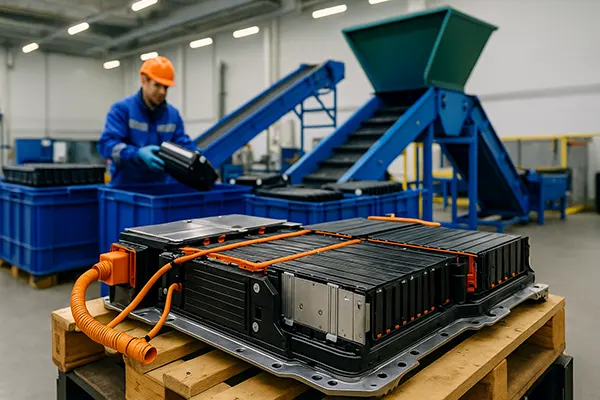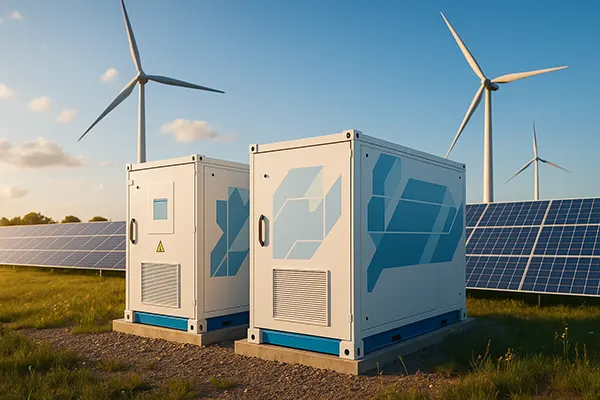
Second Life of Batteries: How Electric Car Batteries Are Recycled
The rapid rise of electric vehicles has created a new environmental challenge — how to manage millions of lithium-ion batteries reaching the end of their life. These energy storage units are filled with valuable materials that can be reused rather than discarded. As of 2025, battery recycling and repurposing have become key elements of sustainable mobility and circular economy strategies across the world.
Modern Technologies for Recycling Electric Car Batteries
Battery recycling in 2025 relies on advanced technological processes designed to maximise resource recovery and reduce environmental impact. The most common methods include hydrometallurgical, pyrometallurgical, and direct recycling approaches, each targeting specific materials and waste levels. These techniques make it possible to recover essential elements like lithium, cobalt, nickel, and manganese from used cells.
Hydrometallurgical recycling, in particular, uses water-based chemical solutions to extract metals efficiently while producing minimal toxic emissions. This method is now preferred across Europe and Asia because it consumes less energy than traditional smelting and allows nearly 95% of valuable materials to be recovered. Such progress helps create a closed-loop system where old batteries give life to new ones.
Meanwhile, direct recycling — a newer approach — aims to preserve the structure of cathode materials instead of breaking them down completely. It allows battery components to be reused with fewer steps and lower energy costs, increasing efficiency and making recycling more economically viable for manufacturers.
Key Global Leaders in Battery Recycling
Several companies are leading innovation in this field. Firms like Umicore (Belgium), Li-Cycle (Canada), and Redwood Materials (USA) have established large-scale recycling facilities capable of processing thousands of tonnes of battery waste every year. These facilities combine automation, robotics, and artificial intelligence to separate, analyse, and process materials with high precision.
In China, CATL and GEM are implementing vertical recycling systems integrated into battery production lines, ensuring that nearly all used materials return to manufacturing. Meanwhile, in Europe, the European Battery Alliance supports initiatives that help create local recycling ecosystems, ensuring independence from imported raw materials and supporting the EU’s Green Deal objectives.
These developments illustrate how battery recycling has shifted from being a niche environmental task to a central pillar of sustainable industrial policy worldwide.
Second-Life Applications for EV Batteries
Not all electric vehicle batteries are recycled immediately after their automotive life ends. Many still retain up to 80% of their original capacity, making them suitable for so-called “second-life” applications. These batteries are reused to store renewable energy, stabilise electrical grids, or provide backup power for commercial buildings and households.
For example, car manufacturers such as Nissan and BMW now repurpose their retired EV batteries into energy storage systems for solar and wind installations. This helps balance energy supply during fluctuations and supports the wider adoption of renewable sources. It also extends the useful life of the batteries by up to 10 years before they are finally recycled.
Such reuse not only delays waste but also contributes to cost reductions in renewable energy projects. Reusing existing materials instead of creating new ones lowers the overall environmental footprint, making clean energy truly sustainable from production to disposal.
Economic and Environmental Benefits
The economic benefits of battery reuse are significant. By extending the life of batteries, manufacturers reduce their dependence on mined materials and volatile commodity prices. This helps stabilise production costs and ensures long-term sustainability for the electric vehicle industry.
Environmentally, second-life use reduces waste generation and minimises the carbon footprint associated with producing new batteries. It also supports global efforts to achieve carbon neutrality by 2050, aligning with international climate agreements such as the Paris Accord.
For consumers, these innovations mean cheaper and more reliable access to renewable energy storage solutions. A sustainable energy future depends not only on producing clean electricity but also on storing it efficiently — and second-life batteries are becoming a key part of that solution.

Challenges and Future Prospects
Despite the progress, battery recycling and reuse still face obstacles. Complex battery designs, varying chemical compositions, and safety risks associated with high-voltage components make recycling technically demanding. Moreover, the global infrastructure for battery collection and processing remains limited compared to the rapidly growing number of EVs on the road.
Governments and manufacturers are now working together to create standardised systems for tracking, collecting, and reusing batteries. The European Union’s new Battery Regulation, effective from 2024, requires all EV batteries to include digital “battery passports” containing detailed information about their materials, origins, and service life, improving transparency and recyclability.
Looking ahead, future technologies such as solid-state batteries and AI-driven recycling plants are expected to make the process even cleaner and more efficient. By 2030, experts predict that up to 90% of electric car batteries will be recycled or reused — marking a major milestone for global sustainability.
The Road Towards a Circular Energy Economy
The concept of a circular economy — where products are continuously reused, repaired, and recycled — is now becoming a reality for the battery sector. Governments, scientists, and private companies are uniting to transform battery waste into a valuable resource stream that fuels the next generation of clean technologies.
In this system, every stage of a battery’s life — from mining to manufacturing to recycling — becomes part of a closed loop designed to minimise waste and environmental impact. This approach represents not just technological progress but also a shift in mindset towards genuine sustainability.
As electric mobility expands, so does the opportunity to make our energy systems more responsible and future-proof. Giving batteries a second life is not only about efficiency — it’s about reshaping the way humanity produces, consumes, and conserves energy in the 21st century.
